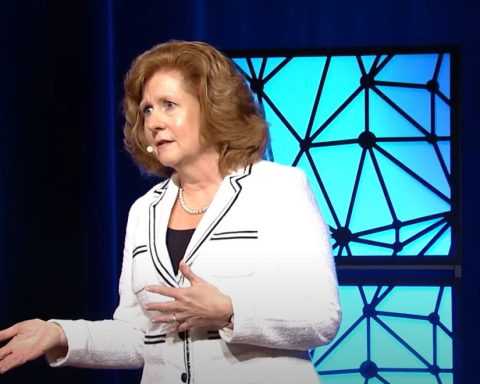In today’s business landscape, the only constant is change. It’s something that can come without warning and that leaders must not only accept but also embrace.
Last year taught us a valuable lesson, which is that business leaders must be prepared to pivot at a moment’s notice and adapt to a whole new set of circumstances. For this reason, it has never been more important to have corporate leaders who can embrace change, learn from it, thrive on it and, through the process, discover how to make sense out of the uncertainty.
Learning agility is the ability to take something you have previously learned or experienced and apply those learnings to an entirely new or different scenario. Individuals with high levels of learning agility prosper during times of transition and actually seek it out; they continuously learn from unfamiliar experiences and apply those lessons to succeed in the next challenge they face. Learning agility leads to knowing what to do when you don’t know what to do.
Life and business experiences contribute to learning agility and a leadership approach.
My personal changes came early in life. Growing up, my family moved at least every three years, and with each move, I had to learn a new playbook. Each school I attended had very different demographics and different teaching methods that I had to learn to adjust to. Then, during my freshman year of college, I joined the Air Force National Guard, which brought more change and learnings that would profoundly inform my approach to leadership down the road.
More recently, changing companies and roles fairly consistently has helped me hone my learning agility in the business environment. Each time I step into a new role, I’m forced to use what I learned previously and adapt it to a new scenario. For example, when I joined the third-party logistics industry, I applied the principles I had learned from a completely different industry: lean manufacturing.
Every life experience — whether in childhood or later — contributes to the type of leader an individual will eventually become. When it comes to early development, learning to communicate with different people and adjusting to different environments increases verbal skills and adaptability. If I look back at the constant moves during my childhood, they were most definitely a challenge, but now I can say that I am grateful for the experience because it shaped me into the leader I feel I am today.
Being an agile learner is more important than ever.
Today’s leaders are judged on much more than just their ability to drive revenue or secure deals. While important, of course, leaders need to be much more than that today, especially in the wake of Covid-19.
It has become essential for today’s leaders to demonstrate empathy, compassion and to be aware of how decisions made at the top impact others within the organization. Part of learning agility is “people agility,” which is the ability to connect with others on an emotional level and display empathy. These individuals understand the value of obtaining insights from different perspectives and using those insights to work through change and become better equipped for the next unpredictable event.
As we move forward in a volatile world where people are much more vigilant of the next possible crisis, the importance of honing these values will only increase.
Cultivate your “change” skills.
Learning agility is something we learn to use over time. I believe we all have the skill in some capacity, but there are some individuals who are more aware of it and focus on leveraging it more than others. For those who find embracing change more challenging, there are actions you can take to cultivate your own learning agility.
First, seek out diverse experiences and people. Be self-aware enough that you’re able to put yourself in new experiences that might seem difficult at first. As part of this, learn to value people who are different than you and have different perspectives based on their own unique backgrounds. As a leader, be conscious of empowering others to use their voice, and recognize that everyone has a unique story to tell and that each one of those stories could be powerful information for your future business decisions.
After these experiences, internalize and reflect on the lessons learned. What do you want to take with you? To cultivate learning agility, it’s critical that we don’t just place ourselves in new environments but learn from the unfamiliar experiences in order to apply the lessons to the next new situation.
As we navigate times of transition, change and new experiences, we not only learn to embrace change but also learn more about ourselves, which ultimately enables leaders to be more authentic. Authentic leaders are true to their values, building increased trust with colleagues and employees over time.
Disruption is inevitable.
In today’s business environment, we must accept the reality that we don’t — and can’t — control the circumstances. In this way, we recognize that disruption is inevitable and that we must be prepared for it.
In today’s fast-paced world where change is happening around us all the time, if a business isn’t changing (and improving), then it’s likely that business will fall behind. When leaders cultivate their own learning agility and encourage others to do the same, the business itself can prosper during times of transformation and emerge stronger than it was before.
By Ilias Simpson




